Abstract
Responses were maintained by a variable-interval schedule of food reinforcement. At the same time, punishment was delivered following every nth response (fixed-ratio punishment). The introduction of fixed-ratio punishment produced an initial phase during which the emission of responses was positively accelerated between punishments. Eventually, the degree of positive acceleration was reduced and a uniform but reduced rate of responding emerged. Large changes in the over-all level of responding were produced by the intensity of punishment, the value of the punishment ratio, and the level of food deprivation. The uniformity of response rate between punishments was invariant in spite of these changes in over-all rate and contrary to some plausible a priori theoretical considerations. Fixed-ratio punishment also produced phenomena previously observed under continuous punishment: warm-up effect and a compensatory increase. This type of intermittent punishment produced less rapid and less complete suppression than did continuous punishment.
Full text
PDF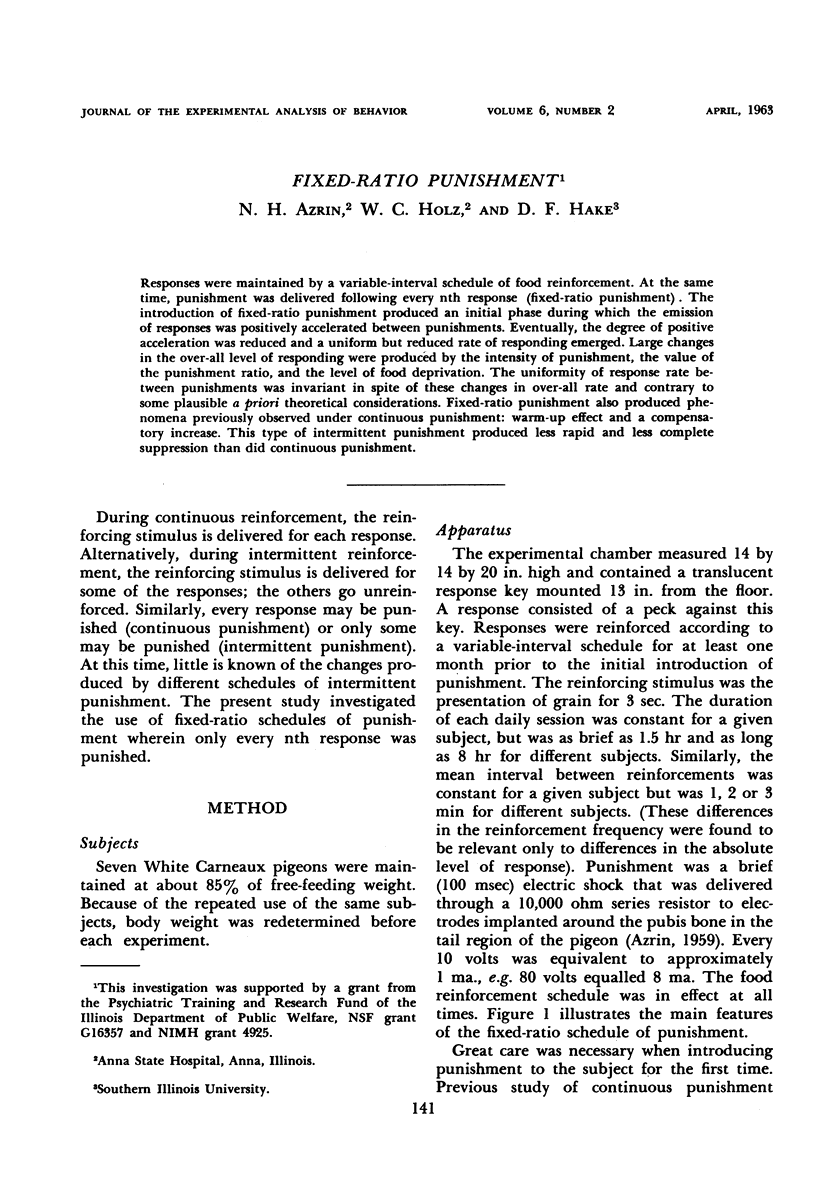

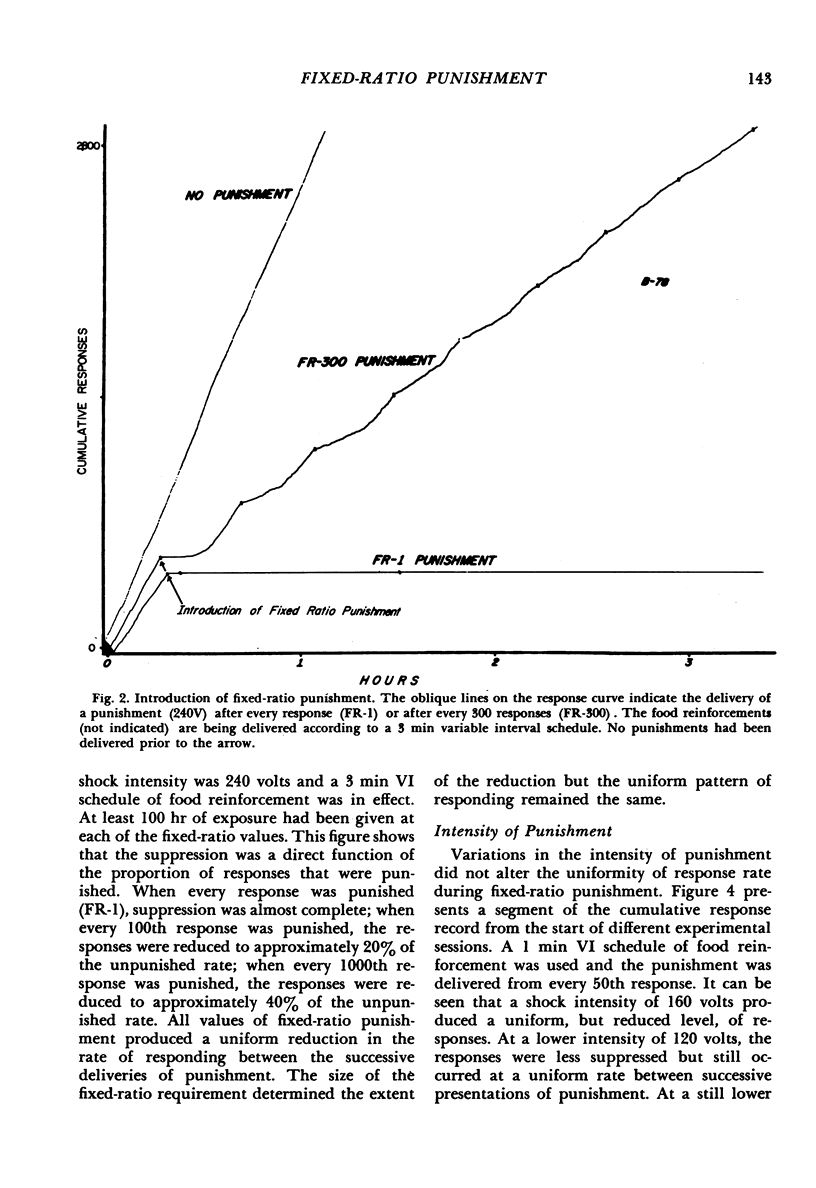
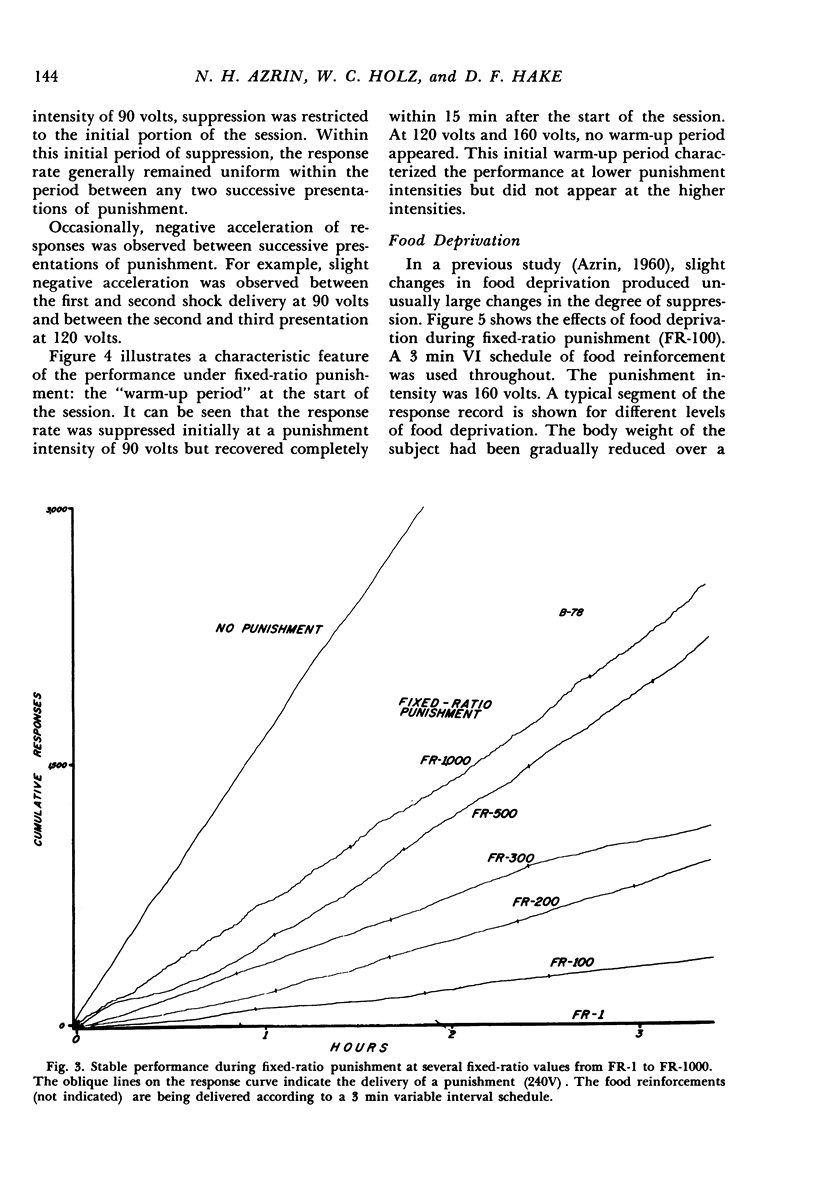
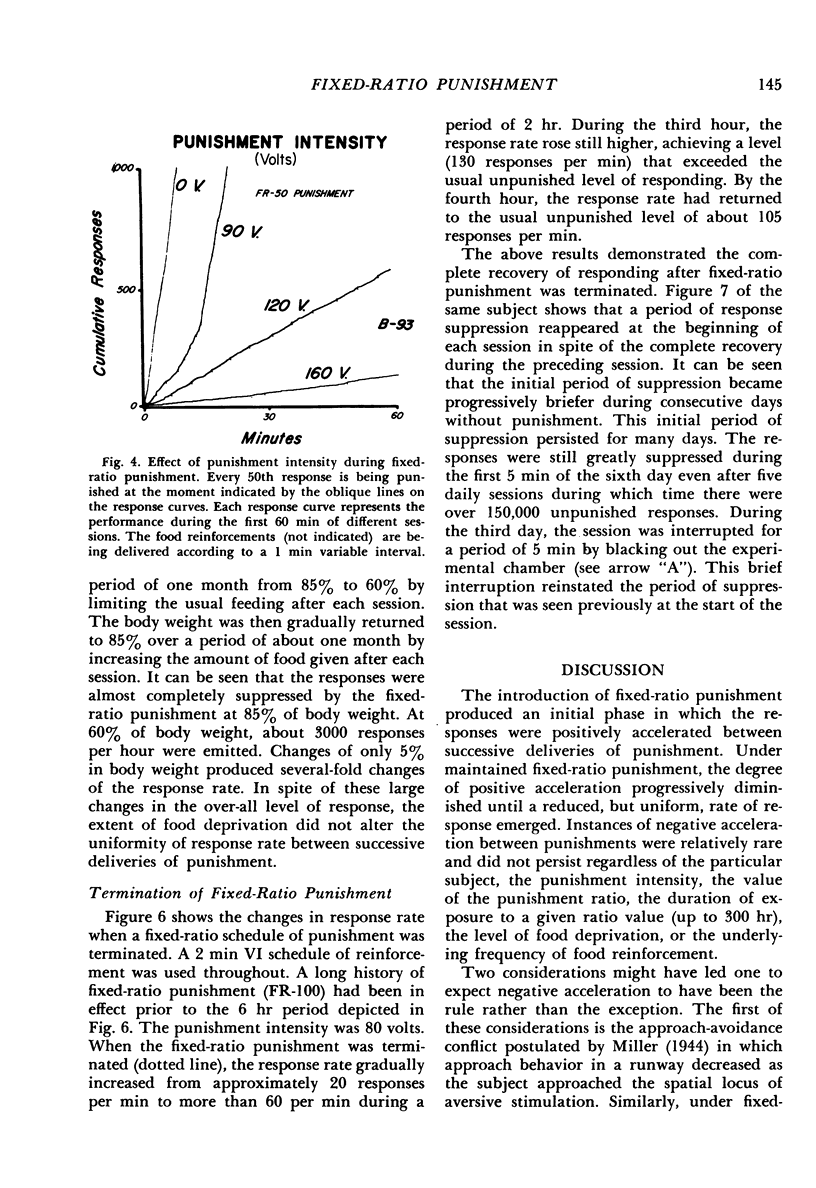
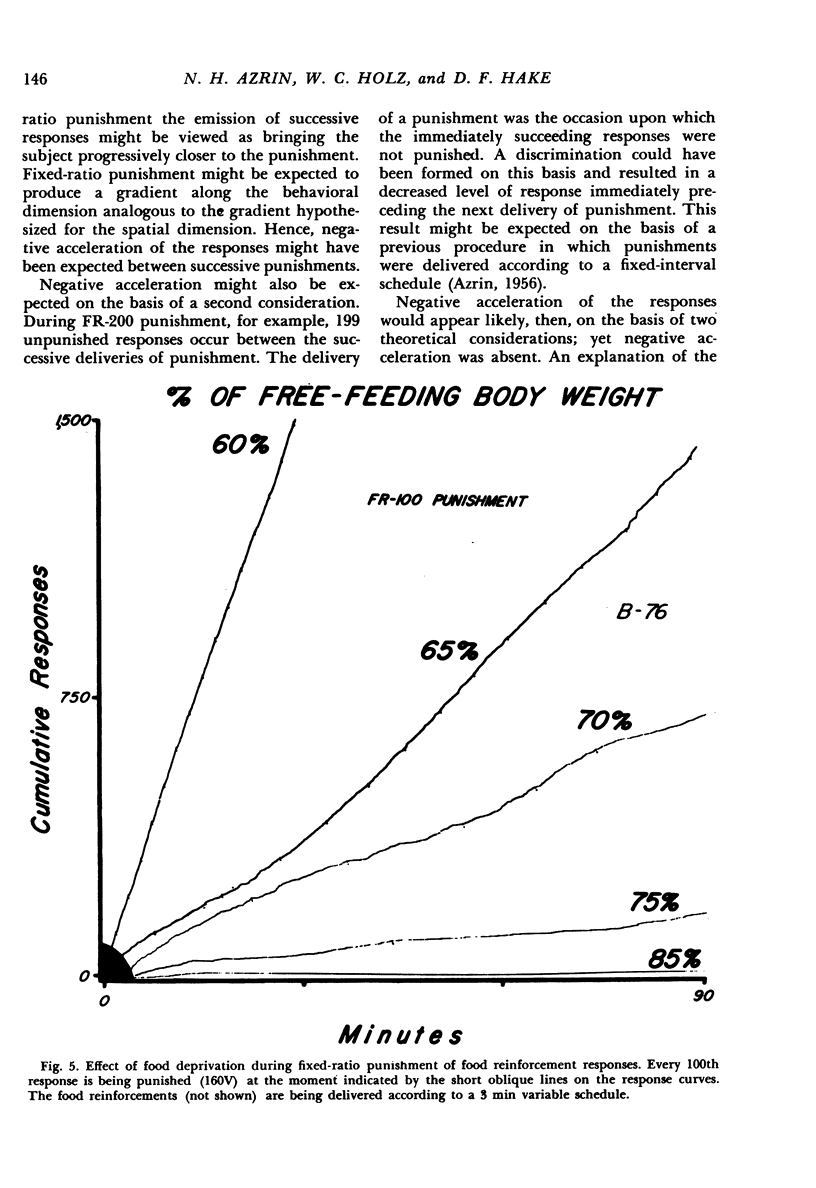
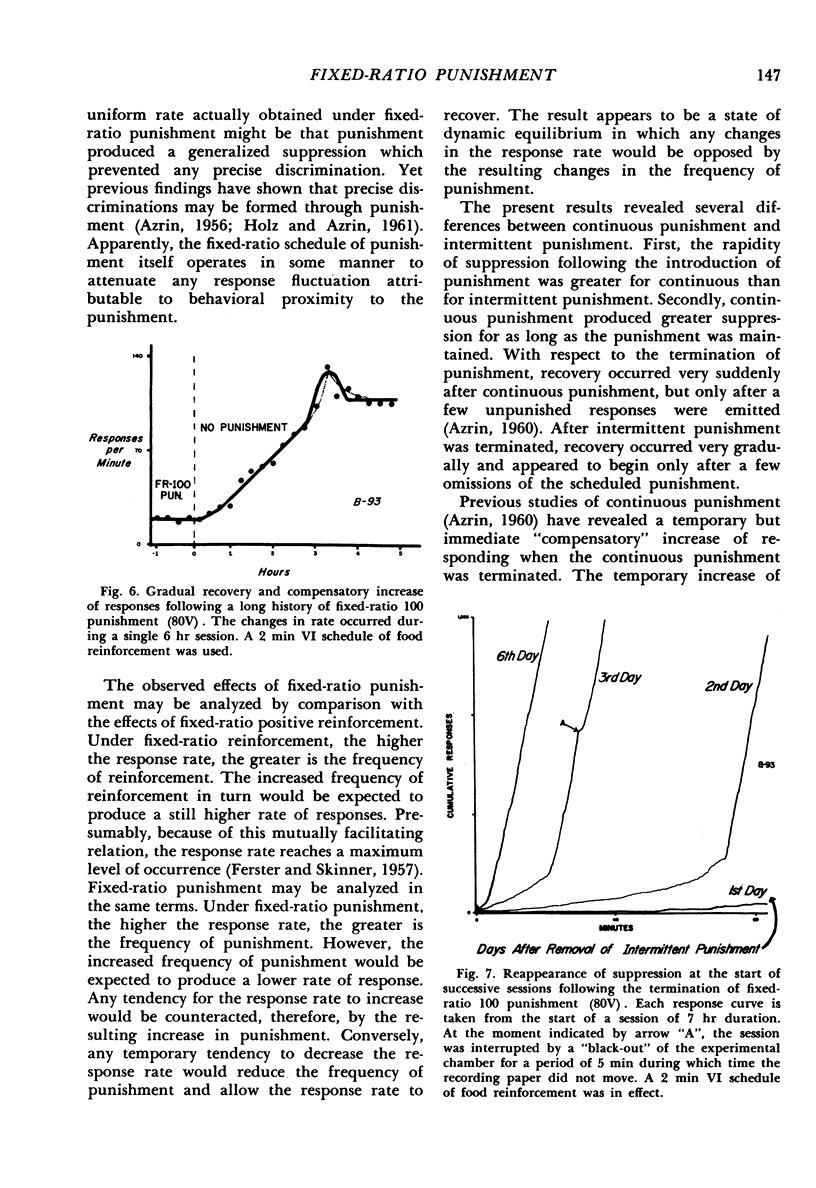
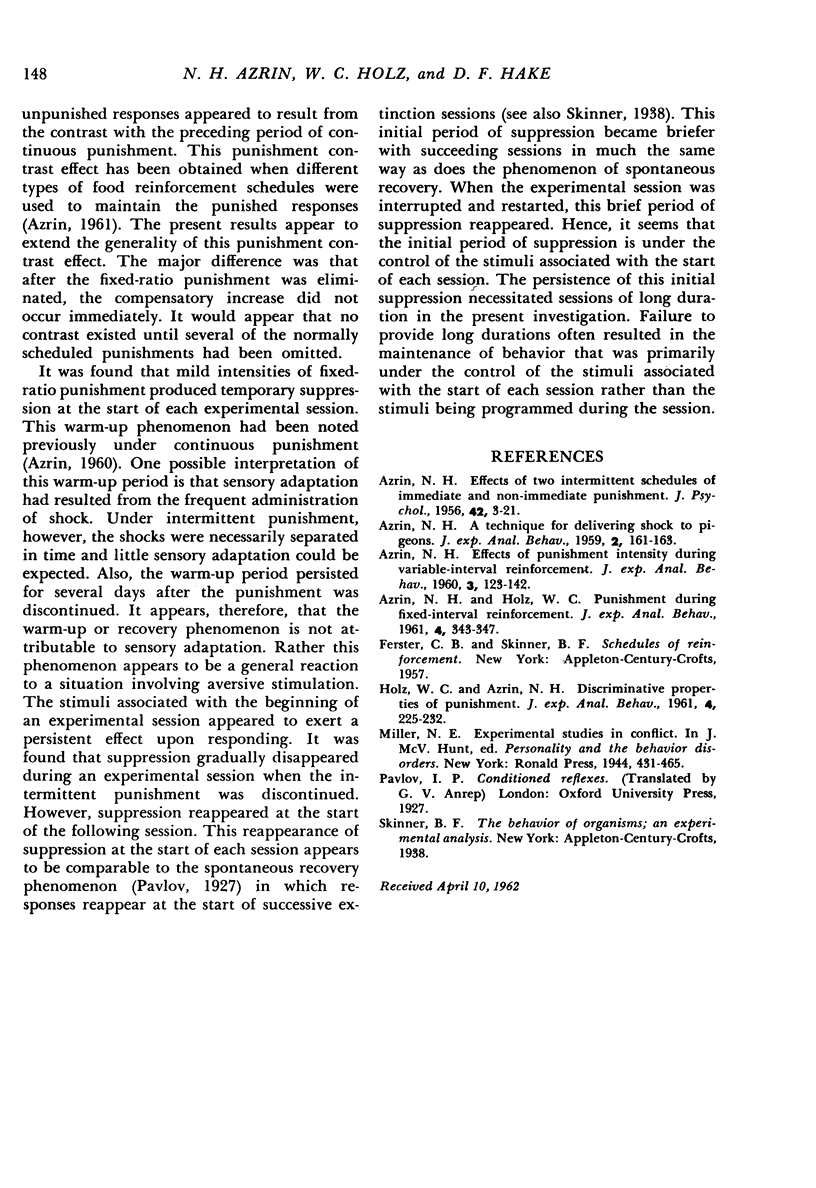
Selected References
These references are in PubMed. This may not be the complete list of references from this article.
- AZRIN N. H. A technique for delivering shock to pigeons. J Exp Anal Behav. 1959 Apr;2:161–163. doi: 10.1901/jeab.1959.2-161. [DOI] [PMC free article] [PubMed] [Google Scholar]
- AZRIN N. H. Effects of punishment intensity during variable-interval reinforcement. J Exp Anal Behav. 1960 Apr;3:123–142. doi: 10.1901/jeab.1960.3-123. [DOI] [PMC free article] [PubMed] [Google Scholar]
- AZRIN N. H., HOLZ W. C. Punishment during fixed-interval reinforcement. J Exp Anal Behav. 1961 Oct;4:343–347. doi: 10.1901/jeab.1961.4-343. [DOI] [PMC free article] [PubMed] [Google Scholar]
- HOLZ W. C., AZRIN N. H. Discriminative properties of punishment. J Exp Anal Behav. 1961 Jul;4:225–232. doi: 10.1901/jeab.1961.4-225. [DOI] [PMC free article] [PubMed] [Google Scholar]


